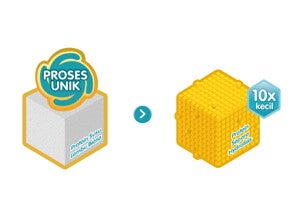
Probiotics, Prebiotics and Antibiotics
What’s the difference between probiotics, prebiotics and antibiotics? Did you know that probiotics, prebiotics and antibiotics aren’t the same thing?
What’s the difference between probiotics, prebiotics and antibiotics?
Did you know that probiotics, prebiotics and antibiotics aren’t the same thing? They may sound alike, but they support your child’s body in different ways. Probiotics for instance, is beneficial for the gut, and can help support a healthy digestive system. It is important to know the difference between them in order to ensure your child is getting the full benefits of all three.
Probiotics
Probiotics are beneficial bacteria in the gut. They are live microorganisms which, when administered in adequate amounts, confer a health benefit to the host, more specifically, the gut and digestive system.
How does it work?
- Harmful bacteria in large numbers cause infections while the beneficial ones help fight off harmful bacteria and maintain good health.
- It is crucial to maintain a good balance of bacteria, which helps producing antibodies to stimulate, train and help mature a child's immune system.
- Examples of probiotics include strains such as L. reuteri probiotics which help improve digestive health.
Prebiotics
As you can probably guess by its name, prebiotics are what comes before probiotics.
- They are fibre or food for the good bacteria (probiotics).
- Prebiotics are not affected by the heat, cold, or acid in the gut.
- Prebiotic fibre can be found in many fruits and vegetables, such as the skin of apples.
Antibiotics
Antibiotics are medicines that fight bacterial infections.
- It works by killing the bacteria in the body and prevent them from reproducing or spreading.
- Sometimes, the antibiotics may also kill off the beneficial bacteria along with the harmful ones.
- In this instance, giving your child probiotics can help to replenish the number of beneficial bacteria in your child's gut.
All of the above have their own roles to play in your child’s growth.
Where can you find them?
Antibiotics are man-made, and should only be prescribed by a healthcare professional if necessary.
On the other hand, probiotics and prebiotics can be found in certain foods naturally. For example, probiotics can be found in yogurt. Another way to add probiotics into your child’s diet is through fortified milk. You can try LACTOGROW PROBIO 3. It is a specially formulated milk powder for children aged 1 to 3 years old, plus the goodness of L. reuteri probiotics to reduce the risk of constipation, for tummy comfort, and for a happy child!


























